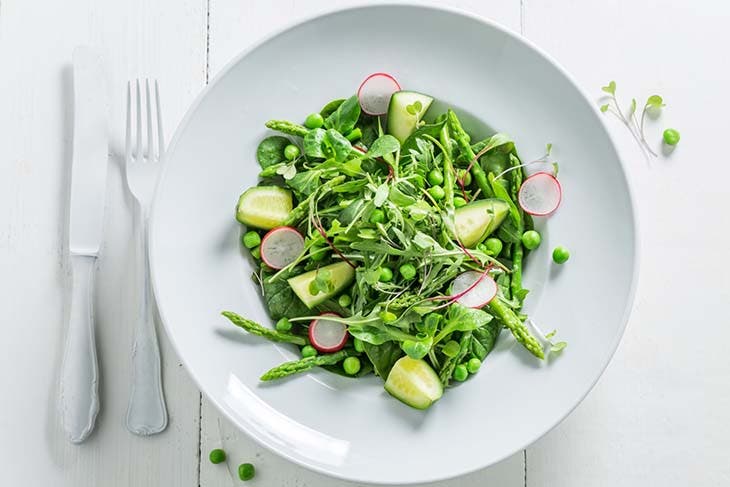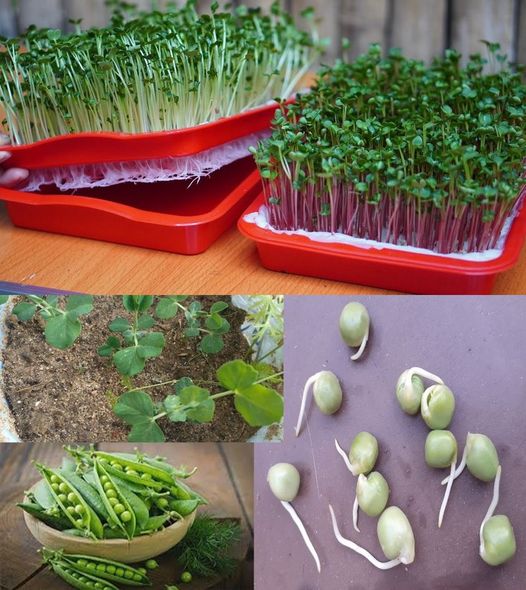ADVERTISEMENT
Diseases and pests
Downy mildew: in humid and hot years, “with downy mildew”, violet and downy spots appear on the foliage. Avoid excessively abundant watering, it is better to water deeply and less frequently. In humid regions, make two preventive sprays of Bordeaux broth, when the plants are 15 cm high and then 1 month later. At the same time you will avoid anthracnose.
Pea anthracnose : produces grayish spots on the leaves, stems and especially the pods. The plant soon withers. If you respect crop rotation, the disease is rare in the garden.
Powdery mildew: the white felt on the leaves and young shoots is a classic. Water at the foot without wetting the foliage and treat at the first symptoms with sulfur sprays, to renew if the disease persists.
In the pea factory

There are two categories of peas, shelling peas or peas and snow peas.
In the first category we distinguish:
Round grain shelling peas (we also talk about smooth grain): they are resistant and precocious, they resist the cold well, which is why they are the first to be sown in spring and at the end of autumn in regions with a temperate climate for early harvesting the following spring. They are fine and tender.
Rough grain sheller peas, so called because they have a rough appearance when dried. They are much sweeter, tastier and stay tender longer. They adapt better to heat and are grown second.
Snow peas are varieties whose young pods, still flat and with very small seeds, are eaten before they grow.
In the two types of peas, according to their height, we separate the pole peas, more than 70 cm high, for staking, which adhere to their support by numerous tendrils, and the dwarf (or half-dwarf) peas with a height of between 40 and 70 cm (knowing that taller varieties can also be planted on short stakes).
Vitamin B3 in the garden Vitamin B3 is one of the few vitamins that the body produces from tryptophan, but in insufficient quantity to cover the daily needs estimated between 11 and 14 mg for an adult. Among the foods best endowed with it, yeast stands out with its 25 mg/100 g, and these are the richest foods of animal origin (liver, kidneys, oily fish, chicken, duck)… Our breakfast cereals are different (5 mg/100g). In the garden, peas are the champions (2.2 mg/100 g), followed by broad beans (1.8 mg/100 g), Jerusalem artichokes (1.3 mg/100 g) and potatoes, eggplant and broccoli (1 mg/100 g). ). And to complete the menu, fresh mushrooms you grew at home (thanks to your September issue) are a great addition (5.2 mg/100 g).
For the little story
Since ancient times, the dried pea has occupied an important place in the human diet, along with other dried grains and cereals. It was from the 13th century onwards that it began to be consumed fresh in the form of mashed potatoes. And it was not until Catherine de Medici and the discovery of certain Italian eating habits, to eat green, unripe vegetables, such as piselli novelli. The French at court claimed these “peas” and the fashion for this fresh vegetable grew during the reign of Louis XIV, who was very fond of early peas.
Small selection of peas
The old varieties were first very tall and late, cultivated with paddles, selected for manual harvesting. Secondly, gardeners asked for shorter varieties to save the work involved in attaching the oars. This is how dwarf and semi-dwarf peas have multiplied. And today, all of these good old varieties are still used in orchards.
ADVERTISEMENT
